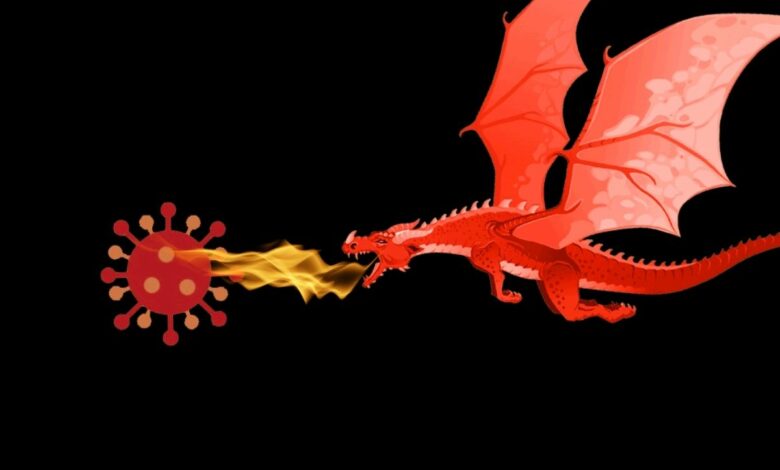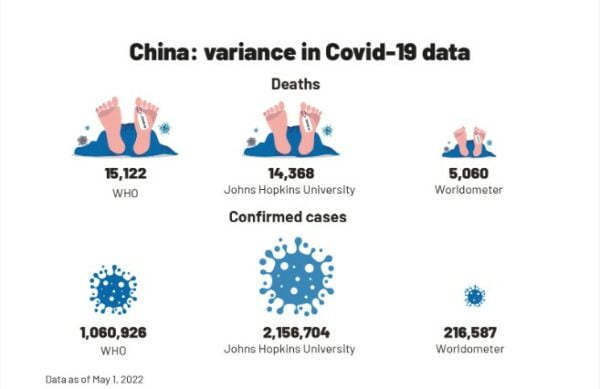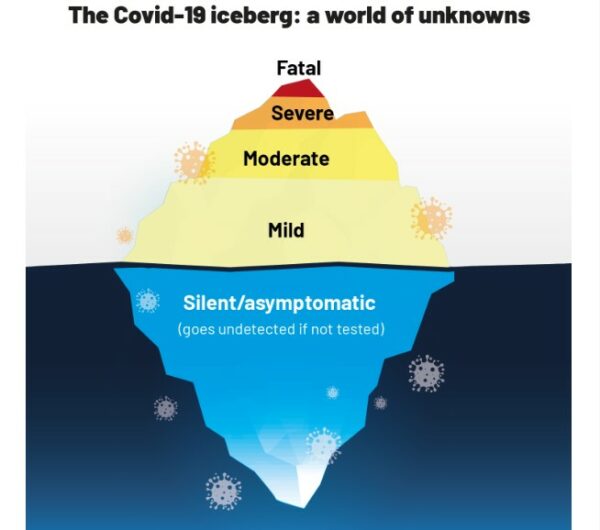Shanghai is in shock: an inside look at China’s corona flare-up and what India can learn from it

Shanghai is in shock: an inside look at China’s corona flare-up and what India can learn from it
Patients in overcrowded hospitals. People are crying from the top of buildings: empty streets, mobs stealing food, and accusations of brazen data manipulation.
People worldwide were starting to think that the pandemic would soon be over when those scenes from Shanghai came out. People in China’s financial nerve center of 25 million have been writing from an Omicron wave for three months now, which didn’t even show up on the Covid-19 map until this year.
People saw things that made them think back to when the virus started spreading in Wuhan. The stark difference isn’t any less clear now. In the beginning, Wuhan was facing a virus that was new to the world and wasn’t as dangerous as Omicron or its sub-variants were. As a second thing, there were no vaccines at the time.
When the rest of the world seemed to be getting a handle on the virus, what went wrong in China? With a vengeance? What can India take away from this?

How can we understand why these questions keep people up at night? Let’s start with some numbers to get a sense of why.
It has a lot of power.
For India, the wave of Omicron cases reached its peak on January 21, with more than 347,000 people getting it that day. In a few weeks, Omicron was able to get rid of the Delta mutation and become the most common form. In the past, Delta was the most lethal. Omicron isn’t as dangerous, but it spreads quickly. So, new cases may rise soon, but this may not lead to more people being hospitalized or dying.
When it came to China, Omicron came a long time after it should have. For the first time in almost a year, new cases rose to about 7,500 a day in February. Shanghai was hit the hardest because of its high population density. Since March, the city has seen more than 500,000 new cases. On April 16, there were nearly 4,000 people who had symptoms and 20,000 people who didn’t. The situation in other parts of China is still bad, but recently, there has been some progress. Experts think that the virus may do what it usually does: spread quickly and then quickly die out.
Staring at a distorted picture.
Since the pandemic started, China’s data sharing has been under many questions and doubts. Around 300 people have died in Shanghai so far this year. Some experts aren’t sure about the low number of deaths: Omicron wave deaths are lower than those from the Delta wave. They say that’s because the upper respiratory tract doesn’t get a lot of Omicron and its sub-variants in healthy people.
However, Western media has questioned China’s account of the deaths of Covid-19. Covid-19-related deaths are usually categorized more narrowly in China than in many other countries. Some chronically ill people who die while infected are called victims of their illnesses, not the virus, according to an April 20 New York Times article. When the Financial Times ran an article on April 17, it raised similar doubts. It quoted a study in the medical journal Lancet that said that the number of cases might be three times higher than official data around the world.
Still, the overall death rate in China shows that things aren’t good. Chinese people died in April 2020, about five months after they first became ill with the virus. It used its administrative tools to stop the virus from spreading. In June 2021, there was a slight rise in the number of people who got a new case. That was the time of the Delta wave, which was the most dangerous part of the pandemic. But China was different because it only had a small bump.
According to the World Health Organization (WHO) dashboard, more than 15,000 people have died in China this year. However, there is a big difference in the numbers on websites like Worldometer. Officially, more than 5,000 deaths have been in the last few days (May 2). The Johns Hopkins University dashboard, one of the most used resources, shows that 14,158 people have died.

China has lost more than 6 million people in the last two years, and the rest of the sphere has been going through a lot. Call it brute force, but the plan had worked, and the virus had been crushed before it spread to whole communities. The country put hard lockdowns, traced transmission chains by going door-to-door, put strict mandatory tests, and set severe travel restrictions.
But now, experts say that China’s public health response may not have been in sync with a virus that keeps changing its shape to find new hosts.
Is this an old zero-Covid-19 policy?
Virologists and epidemiologists following the pandemic say that many things cause China’s failure and that its control-and-surveillance strategy needs to be flexible.
China’s “dynamic zero-Covid-19 policy” is the first thing that makes people wonder. So far, Omicron and its sub-variants haven’t been able to get rid of the pandemic.
This year, a research paper from the CDC (China Center for Disease Control) explains the core of the policy, which will be in place from August 2021 to deal with the Delta variant.
The policy is a time-limited plan to stop the virus from spreading by taking several steps, then getting vaccinated. It includes tracking and identifying transmission chains, putting strict lockdowns, and preventing people from moving around. The goal is to cut the number of new cases down to almost zero and eventually get rid of the virus.
The strategy is very different from the traditional containment and mitigation strategies that allow for precise responses like opening businesses in conjunction with vaccines. This strategy is very different.
A “dynamic zero-Covid-19 policy” requires a lot of work, mainly to deal with a fast-growing variant like Omicron.
However, there may have been problems with how China tried to fight the virus. On daily times, Anurag Agrawal, a well-known person who has been talking about the pandemic, says that a fast-growing variant like Omicron is hard to keep under control with this kind of policy.
Gautam Menon, an expert on the pandemic and a professor at Ashoka University, thinks the same thing as him. Menon told a TV station that disease is hard to stop once it has spread through a population because there are always new versions.
Rajeev Jayadevan, a member of the Indian Medical Association’s Covid-19 task force, told one of the daily news that such a policy leaves China with no choice but to lock down, trace, and test people. It’s a bad situation, but he sees a silver lining in the clouds, and most other experts haven’t seen that.
Data from China is worth a lot of money.
There are things that we are getting out of this process, says Jayadevan. Without mass testing, it would not have been possible to figure out why there were so many Covid-19 cases that didn’t show up until later, says the doctor.
Only a few people in Shanghai had symptoms, which he finds attractive.
Data from Shanghai shows how widely the virus can spread without causing symptoms.
— Rajeev Jayadevan (@RajeevJayadevan) April 3, 2022
Also explains why so many people develop antibodies despite having no memory of symptoms of COVID-19.
China is finding this because they are testing extensively. https://t.co/1wXrLUaMMF pic.twitter.com/7ttfqCLAyP
One more expert on infectious diseases, who didn’t want to be named, agrees with Jayadevan on this point. He says that China’s data can be important because no other large country has used the zero-Covid-19 strategy to fight the Omicron wave, which China did. If you look, not many Indian states are doing genome sequencing or on-the-ground Covid tests, and even when doctors see patients with Covid-19 symptoms, they may not pay much attention to them.
There are many cases; Jayadevan says China has lifted one of them out of the water.

Without its zero-Covid-19 policy, it would not have been possible to find so many asymptomatic people. It’s this way that he explains the idea:
The size of Covid-19 in a big city or area can be likened to an iceberg. Jayadevan wants to know how much of it can be seen above the water, so he asks that question.
Scene 1: If we only look at people in the hospital, we will only see the top of the iceberg.
Scene 2: If we also include outpatient clinics, we will see more of the iceberg because it has people with mild symptoms, most of whom go there.
People who have no symptoms but are linked to someone who has Covid-19 can be found through contact tracing. The more Covid-19 patients you know, the more people you will discover who have no symptoms but are linked to them.
In the fourth scene.
People who have the virus in their noses and throats but don’t have any symptoms or contact history will be caught by a test if the whole town is tested. This means that the actual size of the iceberg will be known if the entire city is tested.
You can now see all of the icebergs, so the percentage of sick people will be tiny.
China’s strategy was to do a lot of testing like this, and by doing so, it has gotten a lot of the iceberg out, but most of it isn’t dangerous, according to reports.
The debate on how well vaccines work
As Ashoka University’s new dean of bioscience and health research, Agrawal says the best way to stop China’s most recent outbreak is to start a vast vaccination campaign with high-quality vaccines that people can trust to work. He talks about a few things to show why he thinks so.
Before the infection spread to Shanghai, Hong Kong, which has a lot of older people, saw a massive spike in new cases. A lot more people were getting sick in Hong Kong during February and March than there were a few months before.
He sees a pattern here. According to him, many older adults in Hong Kong were not vaccinated, which may have led to a high death rate. But he says that small sample sizes may not be able to show an overall trend accurately.
He also says that most older people were vaccinated with inactivated vaccines, which may be why the high numbers.
A Bloomberg report from April 27 says China’s biggest mistake is that it didn’t use an mRNA vaccine. A report says that vaccines made by Sinopharm Group and Sinovac Biotech in China are less effective at stopping infections.
Cansino, Sinovac, and Sinopharm all make inactivated-virus vaccines that don’t seem to protect against the BA.2 infection and hospitalization, Bloomberg said on April 17.
A recent preprint study by Hong Kong University also found that two doses of Sinovac’s vaccines didn’t work as well as Pfizer/mRNA BioNTech’s vaccines, especially for older people.
But why did the Hong Kong government use inactivated vaccines or leave out many older people at high risk from its mass vaccination drive?
People may have thought about inactivated vaccines for the elderly because they have a better safety record than other vaccines. Still, they may not have thought about how effective the vaccine was. However, he says that the effectiveness of inactivated vaccines may be better for younger people there than for the older people there.
In contrast to Shanghai and Hong Kong, countries like Singapore, Australia, and New Zealand have had a lot of Omicron cases since February. Still, there have been very few deaths or severe illnesses in these countries. Experts think those countries used many mRNA vaccines while also gradually getting back to normal.
Agrawal thinks mRNA vaccines might be the best way to get rid of the virus (of the pandemic).
“The right thing to do is to use effective vaccines with the right number of doses to protect everyone at risk; slowly open up the economy, and keep life going.”
Jayadevan gives another point of view. As far as countries like Israel and the United States are concerned, even after getting a lot of booster shots, there are still many people who die even after they get them again. So, the jury is still out on the effectiveness of vaccines in comparison.
Why are there so many deaths in Israel despite very high mRNA vaccine and 4th dose booster coverage?
— Rajeev Jayadevan (@RajeevJayadevan) April 30, 2022
Graph from Johns Hopkins: Death rates in Israel & US.
It is true that Omicron can escape vaccine immunity and cause infection. But the high No. of deaths requires attention.
1/ pic.twitter.com/vpsyJv3pHo
He says that may be a significant factor in the rise in new cases and deaths. In Hong Kong, only 51% of people over the age of 80 got two shots of the Covid-19 vaccines. Besides, Jayadevan says that no matter what vaccine is used, there is still a chance someone will get the virus again. It is what vaccines do to cut the severity of infections and the number of people who die.
There are 3.6 million people in Shanghai who are 60 and older, but only 62% have been fully vaccinated. Only 15% of people over 80 have been fully vaccinated, and a state media report said the rate of people getting booster shots is only 38%.
With the help of other countries, China is trying to build up its arsenal of mRNA vaccines. Recently, reports say that clinical trials on a vaccine for Omicron have begun.
In general, how safe is the country?
Can a situation like this happen in India? Even if Bharat Biotech’s Covaxin, which makes up only a tiny part of India’s immunization campaign, is an inactivated virus vaccine.
Agrawal says that making these kinds of comparisons might not work because so many factors affect the results. Because of this, he says that inactivated vaccines from China cannot be compared to vaccines from India or mRNA vaccines because they have different characteristics, like how long they last and how well they work.
But, based on what happened in China, Agrawal says that people at high risk should get booster shots, like those over 50 or who have a weak immune system because of other conditions, like diabetes, HIV, or cancer.
An ICMR study found that vaccines can be switched out when they don’t work as well. According to the doctor, people who have had inactivated vaccines can get booster shots to be on the safe side.
Experts think that the latest rise in India might not go the way things did in Shanghai. One epidemiologist says that India is in a unique situation because most vaccinated people may already have been naturally infected, as evidenced by a series of seroprevalence studies in different parts of the country. This is why they asked not to be named.
A study in Delhi, for example, found that 90% of the people there had antibodies against the virus. There may not be a significant change in the number of sick people in India, but people who move around without masks may cause a slight rise.
Agrawal’s question is an excellent way to think about what might happen next: When flu and tuberculosis have been around for a long time, how can we expect them to go away?
He says that the goal should be to find the virus early, keep it under control, and keep the health care system ready. People have to go on with their lives, but they have to be careful, like wearing masks. Agrawal’s advice is easy to follow, but it can go a long way to keep the virus at bay.
edited and proofread by nikita sharma



